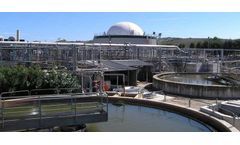Refine by
Waste To Energy System Articles & Analysis: This-Year
5 articles found
Anaerobic digestion can transform what was once considered a liability into a reliable energy source The imperative for sustainable practices in industrial operations has never been greater. Among the sectors facing increasing pressure to reduce environmental impact is the meat-processing industry. While the public conversation around this industry often centers on emissions and waste, it is ...
As the demand for renewable resources and waste-to-energy technologies grows, the profitability of biochar production has become an important consideration for businesses and investors looking to enter the green energy sector. ...
This reduces the need for fossil fuels and helps in the circular economy model by reintroducing waste into the production cycle. Pyrolysis gas, which consists of volatile hydrocarbons, can be used to power the pyrolysis process itself, thereby making the system more energy-efficient and reducing external energy needs. ...
When exploring renewable energy solutions and waste-to-energy technologies, two methods often emerge in discussions: biomass gasification and pyrolysis. While both processes involve the conversion of organic materials into valuable energy, they operate on different principles and produce distinct outcomes. Understanding the differences between biomass gasification and pyrolysis is crucial for ...
Critical considerations for anaerobic digestion projects In the field of industrial wastewater treatment, anaerobic digestion is a powerful process that transforms waste into valuable by-products. Most notably, it produces renewable energy in the form of biogas, which can be used to fuel operations, cogenerate electricity, or even be sold. Another valuable by-product of the process is digestate, ...





